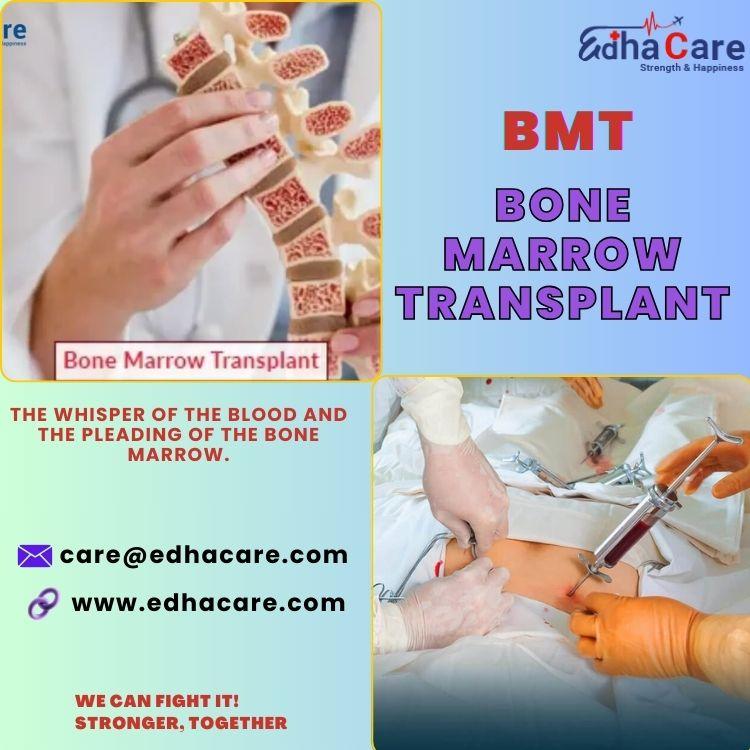Bone Marrow Transplant Myths: What You Need To Know

Bone marrow transplants, also known as hematopoietic stem cell transplants, are a life-saving treatment for various conditions like leukemia, lymphoma, aplastic anemia, and certain genetic disorders. However, this complex medical procedure is often shrouded in misconceptions and myths, which can create unnecessary fear and confusion. This blog post aims to debunk these common myths and provide accurate information about bone marrow transplants.
Myth 1: Bone marrow donation is extremely painful.
The bone marrow collection process, which includes aspiration and peripheral blood stem cell donation, is generally less painful than commonly thought. Aspiration involves getting liquid marrow from the hip bone with minor discomfort and bruising post-procedure. Stem cell donation from the blood, a more common method today, is akin to a blood donation and usually painless, with potential mild side effects such as fatigue and flu-like symptoms.
Myth 2: Bone marrow donation has long-term health consequences.
The human body is remarkably resilient. The bone marrow replenishes itself within a few weeks after donation. Studies have shown that bone marrow donation does not lead to any long-term health problems. Donors can typically resume their normal activities within a few days. Peripheral blood stem cell donation also has minimal long-term risks.
Myth 3: Finding a bone marrow match is nearly impossible.
While finding a perfect match can be challenging, it's not impossible. The likelihood of finding a match is highest within one's own family, particularly siblings. However, if a family match isn't available, registries like DKMS and BeTheMatch maintain vast databases of potential donors. The more diverse the registry, the better the chances of finding a match for someone in need. Furthermore, advancements in matching technology are constantly improving the odds.
Myth 4: Bone marrow transplants are only for children.
While bone marrow transplants are used to treat children with certain conditions, they are also a viable option for adults of all ages. Age is not necessarily a barrier to receiving a transplant, although the overall health of the patient plays a crucial role in determining eligibility. Doctors carefully evaluate each patient's individual circumstances to determine if a transplant is the right course of treatment.
Myth 5: A bone marrow transplant is a guaranteed cure.
While a bone marrow transplant can be life-saving and significantly improve the quality of life for many patients, it's not a guaranteed cure. The success of a transplant depends on various factors, including the type of disease, the stage of the disease, the overall health of the patient, and the compatibility of the donor. There is also a risk of complications, such as graft-versus-host disease (GVHD), which can occur when the donor's immune cells attack the recipient's tissues. It's crucial to have realistic expectations and discuss the potential risks and benefits with the medical team.
Myth 6: Donating bone marrow is a huge commitment and disrupts your life.
While donating bone marrow is a significant decision, it doesn't have to be a huge disruption to your life. The process, from matching to donation, is carefully coordinated and supported by the transplant center. The actual donation procedure usually takes only a few hours, and most donors can return to their normal routines within a few days. The commitment is significant in terms of saving a life, but the process itself is made as smooth and manageable as possible.
Conclusion:
Bone marrow transplants offer hope and a chance at life for many individuals battling serious illnesses. By understanding the facts and debunking the myths surrounding this procedure, we can empower potential donors to make informed decisions and help those in need. If you are healthy and willing to donate, consider joining a bone marrow registry. You could be someone's life-saving match.
Other treatment information are also available by specialty:
https://www.edhacare.com/ar/hospital/cleveland-clinic-abu-dhabi
https://www.edhacare.com/ar/treatments/ivf/ovarian-driling
https://www.edhacare.com/ar/treatments/endocrinology/congenital-adrenal-hyperplasia
https://www.edhacare.com/ar/treatments/neurology/intrathecal-baclofen-pump
https://www.edhacare.com/ar/doctors/e-n-t-surgery-treatment-in-bangkok
https://www.edhacare.com/ar/treatments/gynecology/molar-pregnancy-treatment
https://www.edhacare.com/ar/doctors/dermatology-treatment-in-iran
https://www.edhacare.com/ar/doctors/rheumatology-treatment-in-iran
https://www.edhacare.com/ar/treatments/pulmonology/tuberculosis-treatment
- Art
- Causes
- Crafts
- Dance
- Drinks
- Film
- Fitness
- Food
- Jeux
- Gardening
- Health
- Domicile
- Literature
- Music
- Networking
- Autre
- Party
- Religion
- Shopping
- Sports
- Theater
- Wellness


